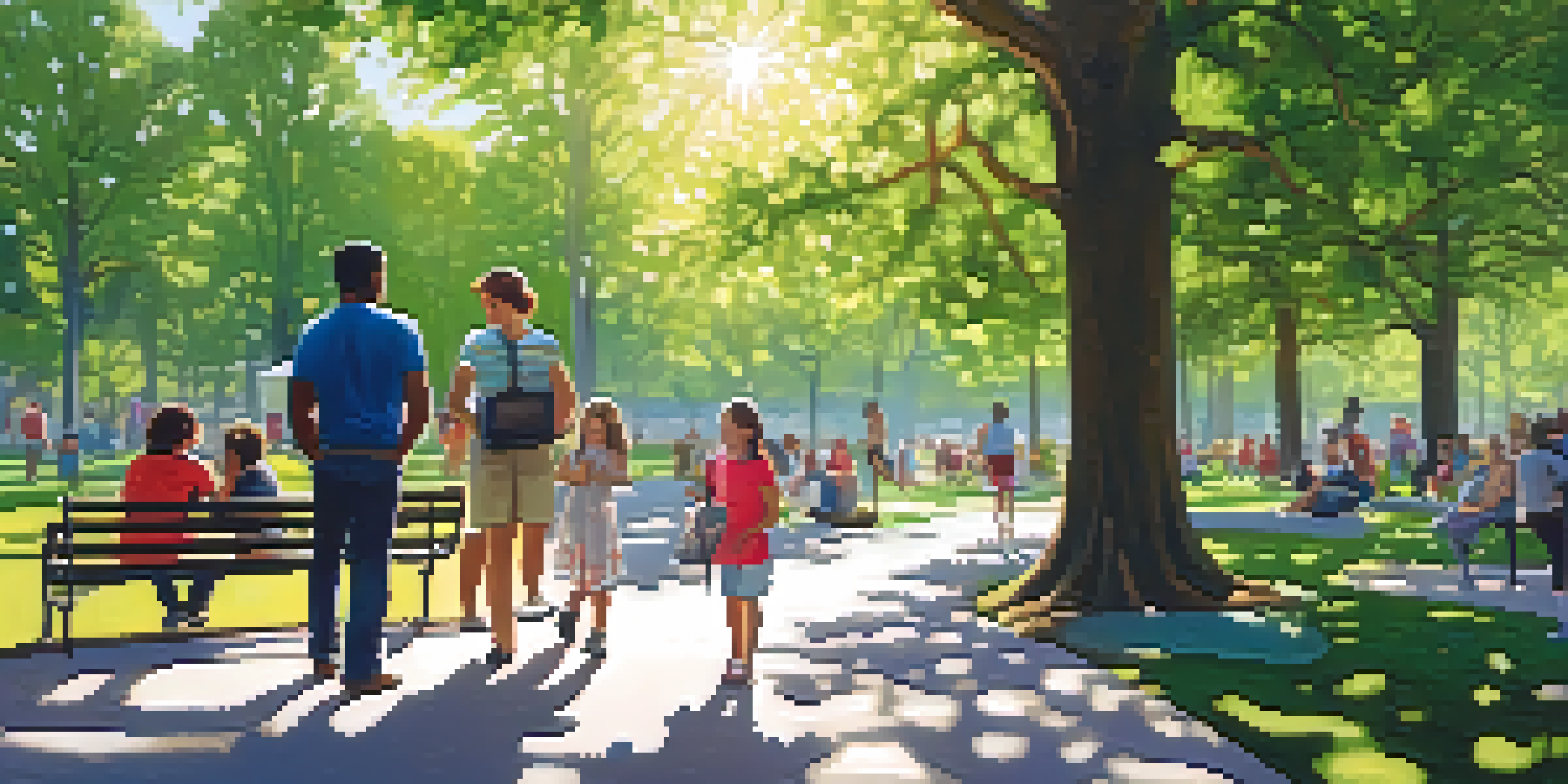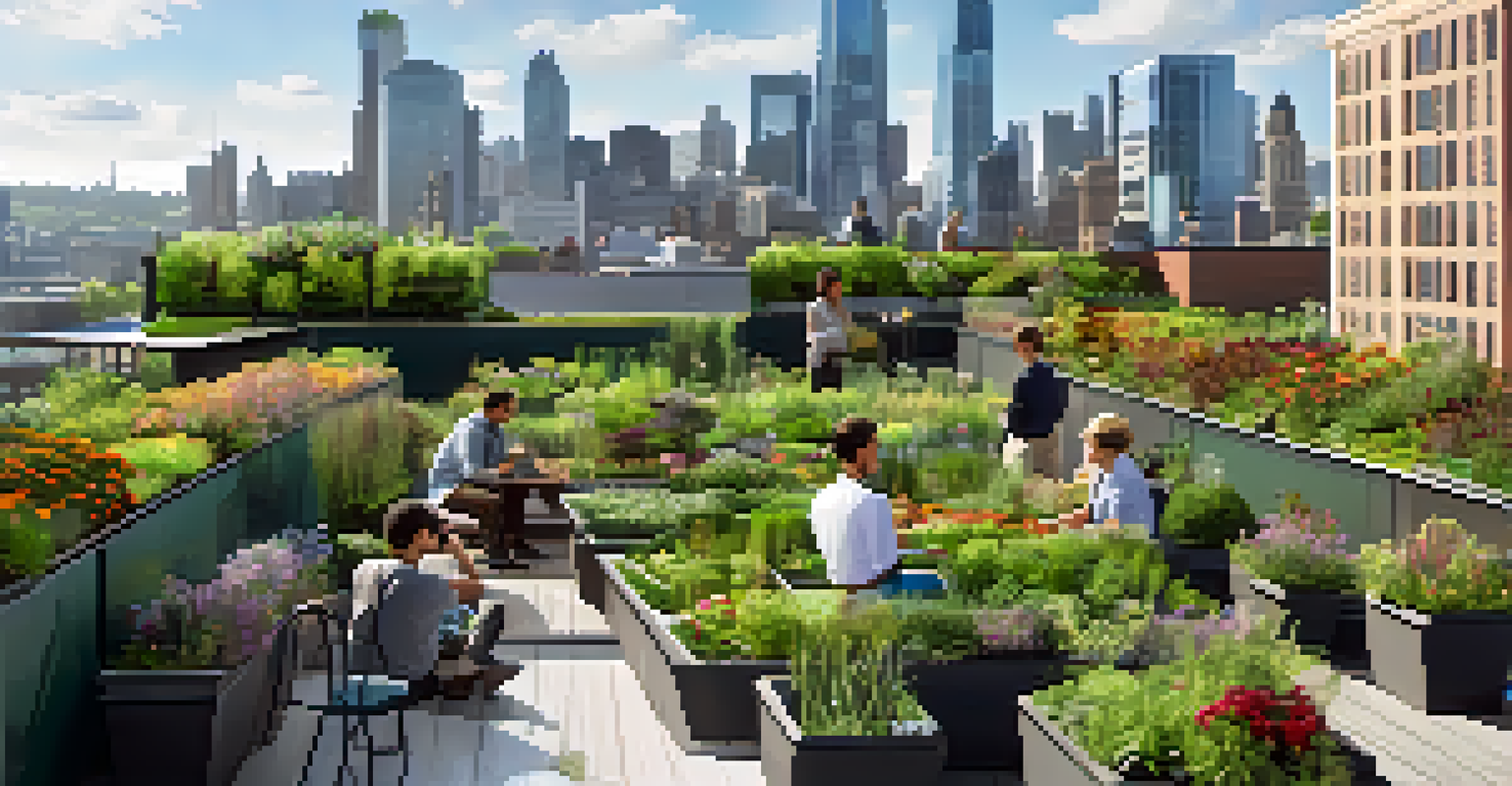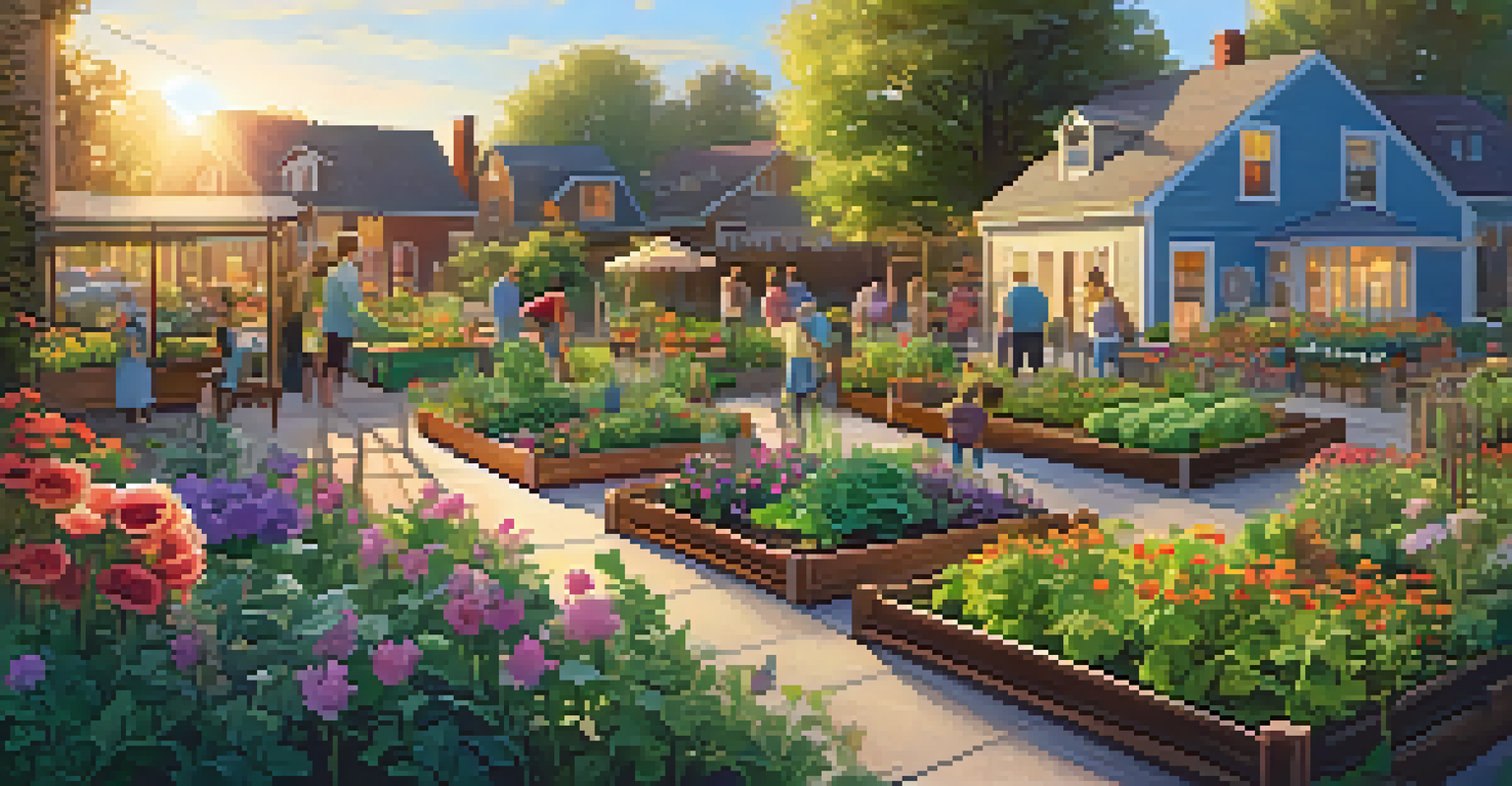The Role of Urban Green Spaces in Sustainable Design

Understanding Urban Green Spaces and Their Benefits
Urban green spaces refer to parks, gardens, and other vegetated areas within cities. They serve as vital lungs for urban environments, providing fresh air and a refuge from concrete and asphalt. Their benefits extend beyond aesthetics, as they play a crucial role in enhancing our quality of life.
In every walk with nature one receives far more than he seeks.
These spaces improve mental health by offering places for relaxation and recreation. Studies show that spending time in nature can reduce stress and promote well-being. This connection to nature is essential, especially in densely populated areas where access to natural elements can be limited.
Moreover, urban green spaces foster biodiversity by providing habitats for various species. This promotes a balanced ecosystem, which is increasingly important in urban landscapes that often lack natural habitats. By integrating these green areas, cities can support wildlife while enhancing their ecological footprint.
The Role of Green Spaces in Climate Resilience
As climate change poses significant challenges, urban green spaces play a pivotal role in enhancing climate resilience. They help mitigate the urban heat island effect, which causes cities to become significantly warmer than their rural surroundings. By providing shade and cooling through evapotranspiration, these areas can lower temperatures in urban environments.

Additionally, green spaces absorb rainwater, reducing runoff and preventing flooding during heavy storms. This natural drainage system is essential for mitigating the impacts of extreme weather events. By integrating such spaces into urban design, cities can manage water more effectively and protect infrastructure.
Urban Green Spaces Enhance Well-being
These areas provide mental health benefits, promote relaxation, and foster community connections.
Furthermore, these areas contribute to carbon sequestration, helping to combat climate change. Trees and plants absorb carbon dioxide, a major greenhouse gas, thus playing a direct role in improving air quality and reducing the overall carbon footprint of urban areas.
Enhancing Social Cohesion Through Green Spaces
Urban green spaces provide opportunities for social interaction, fostering community bonds. Parks and gardens serve as gathering places where people can meet, share experiences, and build relationships. This sense of community is vital for social well-being and can reduce feelings of isolation.
The best time to plant a tree was twenty years ago. The second best time is now.
Events such as farmers' markets, outdoor concerts, and community clean-up days often take place in these areas, promoting active participation among residents. Such activities not only enhance community spirit but also encourage stewardship of local environments. When people care for their green spaces, they tend to take pride in their neighborhoods.
Moreover, these spaces can be designed to cater to diverse populations, ensuring inclusivity. By creating accessible parks that accommodate various age groups and abilities, cities can promote equality and make everyone feel welcome. This inclusiveness strengthens social connections and fosters a sense of belonging.
Economic Benefits of Urban Green Spaces
Investing in urban green spaces can lead to significant economic benefits for cities. These areas can increase property values, as homes near parks and gardens are often more desirable. This boost in property values can, in turn, lead to higher tax revenues for local governments, providing funds for community services.
Moreover, green spaces can enhance local businesses by attracting visitors and residents alike. Cafés, shops, and markets located near parks often see increased foot traffic, which can improve their bottom line. This economic activity can contribute to a vibrant local economy, benefiting both businesses and the community as a whole.
Green Spaces Boost Economic Growth
Investing in urban parks can increase property values and attract local businesses, leading to economic vitality.
In addition, green spaces can reduce public health costs by promoting healthier lifestyles. With more opportunities for physical activity, communities can experience lower rates of obesity and related health issues. This reduction in healthcare costs can save cities substantial amounts of money in the long run.
Green Infrastructure: A Key to Sustainable Urban Design
Integrating green infrastructure into urban design is essential for sustainability. This involves combining natural systems with traditional infrastructure to create a cohesive, functional environment. Examples include green roofs, rain gardens, and permeable pavements that allow rainwater to filter through, reducing runoff.
By designing with green infrastructure, cities can enhance their resilience to climate change while improving overall urban aesthetics. These features not only serve functional purposes but also create visually appealing spaces that attract residents and visitors alike. This dual benefit can lead to a more sustainable and enjoyable urban experience.
Additionally, green infrastructure can provide cost savings for cities by reducing the need for expensive traditional stormwater management systems. Investing in these natural solutions can lead to long-term financial benefits while promoting environmental sustainability, making it a win-win for urban planners.
Innovative Design Approaches for Urban Green Spaces
Incorporating innovative design approaches can elevate the role of urban green spaces in sustainable design. Concepts like biophilic design, which seeks to connect people with nature, are becoming increasingly popular. This involves creating environments that incorporate natural elements, enhancing the overall experience for users.
Another approach is the use of multifunctional green spaces that serve various purposes. For example, a park can provide recreational opportunities, act as a community gathering spot, and manage stormwater runoff simultaneously. By maximizing the utility of these spaces, cities can ensure they meet the diverse needs of their residents.
Climate Resilience Through Green Design
Integrating green infrastructure helps cities manage stormwater, reduce heat, and combat climate change.
Furthermore, engaging the community in the design process is essential for creating successful green spaces. By involving residents in planning and decision-making, cities can ensure that these areas reflect the needs and desires of the community. This collaboration can lead to more meaningful and well-utilized green spaces.
The Future of Urban Green Spaces in Cities
The future of urban green spaces looks promising as cities recognize their importance in sustainable design. As urbanization continues to rise, integrating green spaces into city planning is becoming a priority. This shift reflects a growing understanding of the myriad benefits these areas provide for both people and the environment.
Innovative technologies, such as smart irrigation systems and urban farming initiatives, are set to enhance these spaces even further. These advancements can help cities manage resources efficiently while promoting sustainable practices. By embracing technology, urban green spaces can thrive in the face of challenges posed by climate change and population growth.

Ultimately, the integration of urban green spaces into city life will play a crucial role in shaping livable, resilient, and sustainable communities. As we look to the future, prioritizing these spaces will not only enhance the urban landscape but also contribute to the overall well-being of residents and the health of our planet.